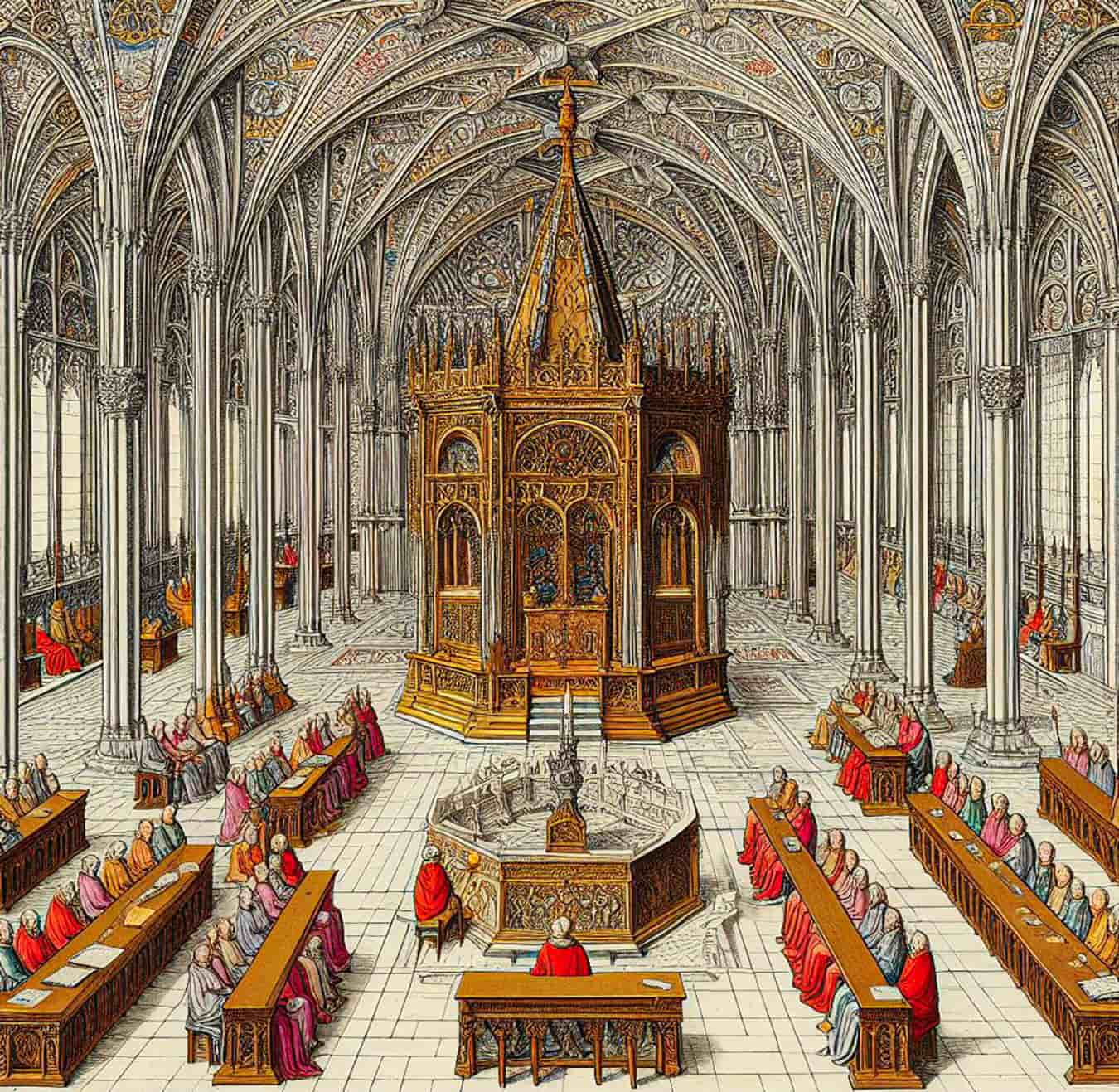The term “dicastery” is used to refer to specific departments or organizations within the Roman Curia. The word comes from the Greek “δικαστήριον,” which means “tribunal of justice,” derived from “δικάστης,” judge or juror. The Greek word dicasterion was used to describe each of the 10 divisions of the justice tribunal of the heliasts (ἡλιασταί) of Athens, which is where the word “dicasterion” was first used (in Greek, dikastes meant “those who have sworn”).
The Roman Curia is the central administrative body of the Holy See, overseeing the affairs of the Roman Catholic Church.
Dicastery’s History
Creation of Congregations in the Roman Curia (1588)
In order to better organize the cardinal collegiates, Pope Sixtus V created fifteen congregations inside the Roman Curia in his apostolic constitution, Immensa aeterni Dei, on January 22, 1588. Although the word “dicastery” is not used in the Apostolic Constitution itself, it is generally used to refer to all congregations, tribunals, and offices within the Roman Curia. Sapienti consilio (“with wise counsel”), Pius X’s document reforming the Curia, includes the word dicastery only incidentally.
Establishment by the Code of Canon Law (1917)
The Congregations, Tribunals, and Offices that make up the Roman Curia were established by the Code of Canon Law in 1917. The Roman Curia is made up of congregations, tribunals, offices, and secretariats, although the apostolic constitution Regimini Ecclesiae universae by Pope Paul VI refers to all of them as dicasteries.
Its Usage in Subsequent Documents
When referring to the Roman Curia, the word “dicastery” is not used in either the 1983 Code of Canon Law or the apostolic constitution Sacrae disciplinae leges, both of which were issued by Pope John Paul II. The Secretariat of State, the Council for the Public Affairs of the Church, the Congregations, the Tribunals, and other organizations, the formation and competence of which are specified by particular law, make up the Roman Curia as stated in Canon, Article 360.
Introduction to the Term “Dicastery” (1988)
Pope John Paul II first used the word “dicastery” in his June 28, 1988, apostolic constitution, Pastor Bonus (“The Good Shepherd”). Article 1 of the Constitution provides that:
The Roman Curia is the complex of dicasteries and institutes which help the Roman Pontiff in the exercise of his supreme pastoral office for the good and service of the whole Church and of the particular Churches.
Vatican.va
The Holy See’s Secretariat of State is one of the dicasteries, along with the congregations, tribunals, pontifical councils, and offices included in this document.
Modern Structure
The Roman Curia is outlined in Article 12 of Pope Francis’ apostolic constitution, Praedicate Evangelium, issued on March 10, 2022. It comprises the equal and independent Secretariat of State, dicasteries, and institutions. There are both judicial and monetary institutions. As a result, the new dicasteries have taken on the roles formerly filled by the congregations and pontifical councils envisioned in the Apostolic Constitution Pastor Bonus.
Therefore, the “dicastery” refers to specific departments or bodies within the Roman Curia that assist the Pope in his leadership of the Catholic Church. Pope John Paul II first used the term “dicasteries” in 1988 to refer to a variety of congregations, tribunals, councils, and offices.




